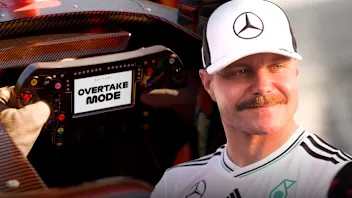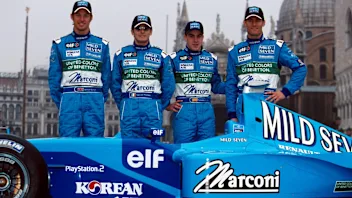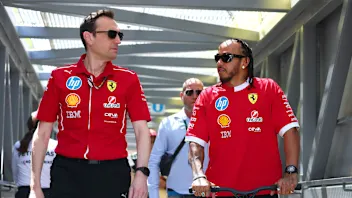Monte Carlo's miracle, Part two - taking the team to Monaco
It isn’t just the Grand Prix organisers who have to deal with the unique logistical demands of Monaco - the F1 teams also have more than a few challenges in preparing for competing on the Monte Carlo streets. In the second instalment of our two-part feature, Force India’s race team coordinator Franco Massaro describes the demands and complexities of going racing in the Principality…
Q: What are the logistical challenges of Monaco for the teams?
A: Monaco stands out first and foremost because of its location really - it is not that accessible for all the trucks that arrive in the build up to a Formula One event. It is a small place, which perhaps you realise best when you go there. So in order to get everything there and set up it has to be very well coordinated.
Q: And who is responsible for that? Do teams make arrangements between themselves?
A: The organisers do their best to try and coordinate all the different areas they have, and to allocate vehicle parking space. But ultimately it comes down to everybody from all the different teams, TV crews, hospitality and everyone else adhering to a collective plan and not working on their own agenda. It goes to a plan of sorts, but it is difficult compared to most circuits where you drive in and there is plenty of parking space for everybody.
Q: How has it changed over the years?
A: Ten years ago there was even less space, so it has improved - but it hasn’t altered too much from year to year because it can’t really expand that much. Historically the organisers set the guidelines, with the traffic regulations, whether certain streets are closed so we have some extra parking space - for example by the swimming pool. They coordinate all of that, working with the local police as well. Occasionally you’ll get someone who ignores the instructions, and it doesn’t take much to suddenly scupper proceedings. It doesn’t tend to happen when you are setting up: that is normally pretty well organised and stuck to. Packing up can be more complicated - you have to do it in stages, as you can’t have everyone arrive at the same time. Last year, for example, security didn’t get an instruction of when trucks were allowed down, so we were just waiting there for an hour. It can be frustrating, but at the same time there is simply no other venue that has the atmosphere of Monaco - at least once you are set up and working.
Q: And how does it compare to other venues, especially the more modern additions to the calendar?
A: On a logistical side it is not one I look forward to particularly, because it is a lot more work for everybody, and a lot more challenging. We don’t send as many vehicles there for example. We have to swap loads about to try and make it easier for ourselves - we normally take five trucks to an event, plus an additional one that DHL take for us, but for Monaco we send two back to the UK and have another one that we then load those two into, to try and make it easier and have fewer vehicles. Once you are set up and get to the end of Tuesday afternoon, Wednesday morning, it is then like any other event, but with a lot more atmosphere about it. You have the public very close, a lot of parties at night in the quay, so the atmosphere is very different.
Q: How do you cope with having to split locations, and having personnel both in the garage and the paddock?
A: At a normal circuit you have the garages, and immediately behind them your support vehicles which function as an extension of the garage. In Monaco there just isn’t the space. There are no trucks behind the garages there, so the garages are two storeys as opposed to one everywhere else. It is very tight working in there, but people have to work around it. We are allowed one truck down on the harbour. Teams take different approaches as to what truck is down there and what uses it has - ours is for bulkier spares. The other support vehicles we would normally have are scattered around Monaco in various parking locations, some up to 15 kilometres away, so they aren’t really accessible during the weekend - there is only one vehicle we can use for the race. On Saturday night GP2 move out so we can bring a few more trucks down, just so they are closer when we pack down on Sunday night. So even on Saturday, when people are out enjoying themselves, we have a crew that have to move trucks around - and you can’t start until midnight. We try and take it in turns so it doesn’t spoil everyone’s night every year.
Q: So how early do you send set-up crews out?
A: We have an early set-up crew going out, two people, who leave on Thursday morning the week before the race. They will get there on Friday night with a small support vehicle and will start work on Saturday in advance of our main race set-up crew, who arrive on Sunday night in order to start Monday. We get a little bit done beforehand, because otherwise you lose space and time to other people. Over the years it has started earlier and earlier. Traditionally we would start set-up work on a Tuesday morning at any other venue, but at Monaco we start on Saturday.
Q: How many Monaco Grands Prix have you worked?
A: This will be my 11th. I enjoy all of them, at least once the logistical side is complete. From Wednesday afternoon it tends to be enjoyable, and then the chequered flag drops on Sunday afternoon and the work starts all over again.
Q: Overall is it more a pleasure or a headache?
A: Overall, even though there are headaches, of course it is a pleasure to be there because it is just so different to everywhere else; you don’t get another Grand Prix like it. You have to take the good with the bad. Once the nightmare side of it is done, there is nothing else that compares to racing in Monaco.
Next Up
Related Articles
 Logan Sargeant confirmed as Ford WEC Hypercar driver
Logan Sargeant confirmed as Ford WEC Hypercar driver Grosjean reunited with helmet from 2020 Bahrain GP crash
Grosjean reunited with helmet from 2020 Bahrain GP crash.webp) Mekies expects ‘struggles’ amid power unit project
Mekies expects ‘struggles’ amid power unit project Bottas on how F1 drivers will adapt to the 2026 regulations
Bottas on how F1 drivers will adapt to the 2026 regulations Quiz10 quiz questions on Formula 1 car launches
Quiz10 quiz questions on Formula 1 car launches Hamilton to get new Ferrari race engineer for 2026 season
Hamilton to get new Ferrari race engineer for 2026 season